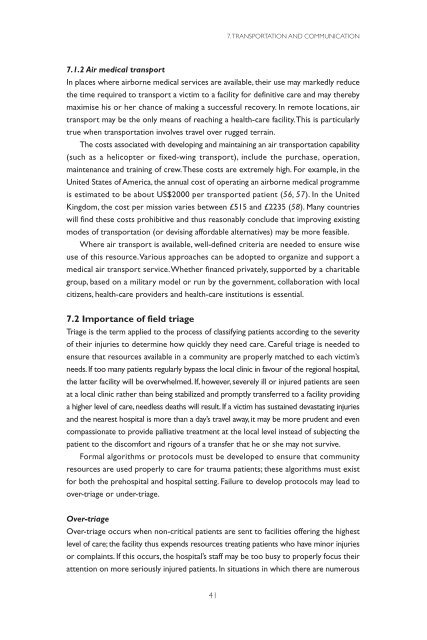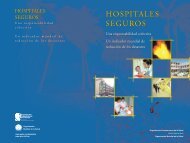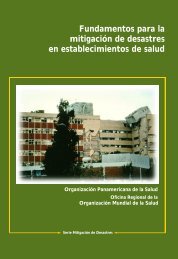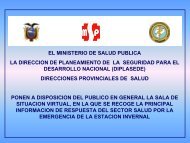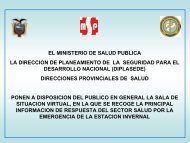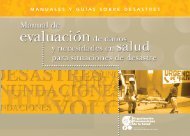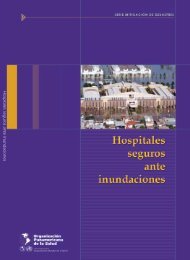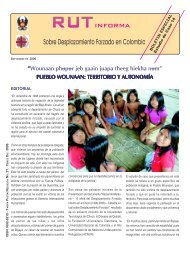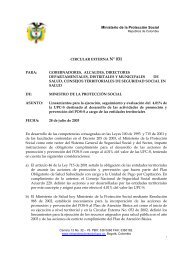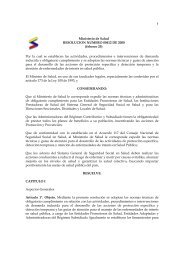Prehospital trauma care systems - World Health Organization
Prehospital trauma care systems - World Health Organization
Prehospital trauma care systems - World Health Organization
Create successful ePaper yourself
Turn your PDF publications into a flip-book with our unique Google optimized e-Paper software.
7.TRANSPORTATION AND COMMUNICATION<br />
7.1.2 Air medical transport<br />
In places where airborne medical services are available, their use may markedly reduce<br />
the time required to transport a victim to a facility for definitive <strong>care</strong> and may thereby<br />
maximise his or her chance of making a successful recovery. In remote locations, air<br />
transport may be the only means of reaching a health-<strong>care</strong> facility.This is particularly<br />
true when transportation involves travel over rugged terrain.<br />
The costs associated with developing and maintaining an air transportation capability<br />
(such as a helicopter or fixed-wing transport), include the purchase, operation,<br />
maintenance and training of crew.These costs are extremely high. For example, in the<br />
United States of America, the annual cost of operating an airborne medical programme<br />
is estimated to be about US$2000 per transported patient (56, 57). In the United<br />
Kingdom, the cost per mission varies between £515 and £2235 (58). Many countries<br />
will find these costs prohibitive and thus reasonably conclude that improving existing<br />
modes of transportation (or devising affordable alternatives) may be more feasible.<br />
Where air transport is available, well-defined criteria are needed to ensure wise<br />
use of this resource.Various approaches can be adopted to organize and support a<br />
medical air transport service.Whether financed privately, supported by a charitable<br />
group, based on a military model or run by the government, collaboration with local<br />
citizens, health-<strong>care</strong> providers and health-<strong>care</strong> institutions is essential.<br />
7.2 Importance of field triage<br />
Triage is the term applied to the process of classifying patients according to the severity<br />
of their injuries to determine how quickly they need <strong>care</strong>. Careful triage is needed to<br />
ensure that resources available in a community are properly matched to each victim’s<br />
needs. If too many patients regularly bypass the local clinic in favour of the regional hospital,<br />
the latter facility will be overwhelmed. If, however, severely ill or injured patients are seen<br />
at a local clinic rather than being stabilized and promptly transferred to a facility providing<br />
a higher level of <strong>care</strong>, needless deaths will result. If a victim has sustained devastating injuries<br />
and the nearest hospital is more than a day’s travel away, it may be more prudent and even<br />
compassionate to provide palliative treatment at the local level instead of subjecting the<br />
patient to the discomfort and rigours of a transfer that he or she may not survive.<br />
Formal algorithms or protocols must be developed to ensure that community<br />
resources are used properly to <strong>care</strong> for <strong>trauma</strong> patients; these algorithms must exist<br />
for both the prehospital and hospital setting. Failure to develop protocols may lead to<br />
over-triage or under-triage.<br />
Over-triage<br />
Over-triage occurs when non-critical patients are sent to facilities offering the highest<br />
level of <strong>care</strong>; the facility thus expends resources treating patients who have minor injuries<br />
or complaints. If this occurs, the hospital’s staff may be too busy to properly focus their<br />
attention on more seriously injured patients. In situations in which there are numerous<br />
41


